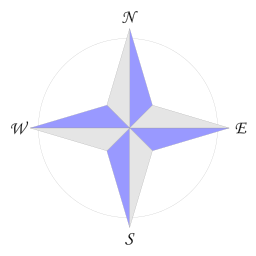In Revelation chapter six, we saw how Jesus (identified as a lamb who was slain) took possession of a scroll with seven seals. Six of those seals were opened in chapter six, each with a corresponding action on earth. The first four seals produced horsemen who brought conquest, war, economic hardship, and widespread death. The fifth seal brought forth the souls of those who had given their lives for Christ.
The sixth seal brought environmental destruction, a tremendous earthquake, and a description of a potential nuclear engagement or some type of meteoric impact. Many scholars associate the opening of these seals with the beginning of what has come to be known as “The Great Tribulation.” This corresponds to the timeframe Jesus spoke of in Matthew chapter twenty-four: “For then there will be great tribulation, such as has not been since the beginning of the world until this time, no, nor ever shall be. And unless those days were shortened, no flesh would be saved…” (Matthew 24:21-22).
Revelation chapter six then continued with a description of the human response to those events: “They called to the mountains and the rocks, ‘Fall on us and hide us from the face of the one seated on the throne and from the Lamb’s wrath!’” (Revelation 6:16 CEB). So those who experienced these catastrophic incidents recognized God’s intervention. However, that recognition prompted them to hide rather than repent. Instead of seeking God’s forgiveness in Christ, these individuals attempted to flee and go into hiding. But these was no escape for them, as is true of everyone.
That chapter subsequently closed by saying, “For the great day of their wrath has come, and who can withstand it?” (Revelation 6:17 NIV). That’s a good question and the answer comes in chapter seven…
“After these things I saw four angels standing at the four corners of the earth, holding the four winds of the earth, that the wind should not blow on the earth, on the sea, or on any tree.
Then I saw another angel ascending from the east, having the seal of the living God. And he cried with a loud voice to the four angels to whom it was granted to harm the earth and the sea, saying, ‘Do not harm the earth, the sea, or the trees till we have sealed the servants of our God on their foreheads’” (Revelation 7:1-3).
Revelation chapter seven represents something of a break in the action before the seventh and final seal is opened in the following chapter. But first, we will receive some insight regarding other events that are taking place during this time.
 Revelation 7:1 begins by saying, “After this I saw four angels standing at the four corners of the earth…” This reference to the “four corners of the earth” represents each of the four compass points of the globe. Those angels were responsible for “…holding back the four winds of the earth so no wind could blow on the earth, on the sea, or on any tree” (NET). The “winds” referenced in this passage convey the idea of a violent agitation, a stream of air, or a strong tempestuous wind. (1)
Revelation 7:1 begins by saying, “After this I saw four angels standing at the four corners of the earth…” This reference to the “four corners of the earth” represents each of the four compass points of the globe. Those angels were responsible for “…holding back the four winds of the earth so no wind could blow on the earth, on the sea, or on any tree” (NET). The “winds” referenced in this passage convey the idea of a violent agitation, a stream of air, or a strong tempestuous wind. (1)
“Then I saw another angel ascending from the east, having the seal of the living God. And he cried with a loud voice to the four angels to whom it was granted to harm the earth and the sea, saying, “Do not harm the earth, the sea, or the trees till we have sealed the servants of our God on their foreheads” (Revelation 7:2-3).
Revelation chapter six earlier closed with the following question: “That terrible day has come! God and the Lamb will show their anger, and who can face it” (Revelation 6: 17 CEV). That answer comes here in Revelation 7:3: “… those who serve our God” (CEB). In addition, we’re also told that each of these servants of God received an identifying seal.
In this context, a “seal” refers to a stamp bearing a private mark that was used for security purposes or document preservation. (2) This seal functioned as a form of identification that marked each bearer as “God’s property” and kept them safe from harm. Verses four to eight then go on to provide us with some additional information regarding these individuals…
“Then I heard the number of those who were sealed: one hundred forty-four thousand, sealed from every tribe of the Israelites: From the tribe of Judah, twelve thousand were sealed” (Revelation 7:4-5, and following).
The Old Testament patriarch Jacob fathered twelve sons whose families went on to form the twelve tribes of Israel. Jacob’s son, Joseph, also had two sons named Ephraim and Manasseh. These sons were later “adopted” by Jacob and added to this tribal list. Of these fourteen tribes, twelve are always selected in varying combinations.
Revelation 7:4-8 represents one such example. That list of twelve tribes includes Joseph’s son Manasseh, while Jacob’s son Dan is omitted, perhaps due to that tribe’s prophetic reputation for treachery (Genesis 49:17). Taken together, these individuals represent 144,000 Messianic Christians who will receive supernatural protection from God when He unleashes His wrath upon a world that has rejected Him.
Image Attribution: ElfQrin, CC BY-SA 3.0, via Wikimedia Commons
(1) G417 – anemos – Strong’s Greek Lexicon (kjv). (n.d.). Blue Letter Bible. https://www.blueletterbible.org/lexicon/g417/kjv/tr/0-1/
(2) G4972 – sphragizo – Strong’s Greek Lexicon (kjv). (n.d.). Blue Letter Bible. https://www.blueletterbible.org/lexicon/g4972/kjv/tr/0-1/
“After these things I looked, and behold, a great multitude which no one could number, of all nations, tribes, peoples, and tongues, standing before the throne and before the Lamb, clothed with white robes, with palm branches in their hands, and crying out with a loud voice, saying, ‘Salvation belongs to our God who sits on the throne, and to the Lamb!’
All the angels stood around the throne and the elders and the four living creatures, and fell on their faces before the throne and worshiped God, saying: ‘Amen! Blessing and glory and wisdom, Thanksgiving and honor and power and might, Be to our God forever and ever. Amen’” (Revelation 7:9-12).
The book of Revelation presents us with a fast-paced narrative, full of constantly shifting events. For instance, compare the following excerpt from Revelation chapter seven with a passage from earlier in Revelation chapter six…
“I saw under the altar the souls of those who had been slain for the word of God and for the testimony which they held…. Then a white robe was given to each of them; and it was said to them that they should rest a little while longer, until both the number of their fellow servants and their brethren, who would be killed as they were, was completed” (Revelation 6:9,11).
“After this I looked, and there was a vast multitude from every nation, tribe, people, and language, which no one could number, standing before the throne and before the Lamb. They were clothed in white robes with palm branches in their hands” (Revelation 7:9 CSB).
The white robes worn by the groups mentioned in Revelation chapters six and seven suggest that a relationship exists between them. However, the interval between these chapters has also brought significant changes. For instance, these individuals were under God’s altar in Revelation chapter six.  But now, they stood before His throne. This group raised a poignant question in the previous chapter: “How long, O Lord, holy and true, until You judge and avenge our blood on those who dwell on the earth?” (Revelation 6:10). But now, they held palm branches, a symbol of victory and triumph.
But now, they stood before His throne. This group raised a poignant question in the previous chapter: “How long, O Lord, holy and true, until You judge and avenge our blood on those who dwell on the earth?” (Revelation 6:10). But now, they held palm branches, a symbol of victory and triumph.
Furthermore, we should note that these individuals hailed from every nation, tribe, and people. The members of this culturally diverse group also represented native speakers of every human language. This is deeply significant, for it tells us that salvation in Christ is not limited to a specific ethno-cultural group. Instead, He invites disciples from every nation, tribe, people and language.
Finally, John, our author, has served as an observer to the events that have taken place up to this point. But as we’ll see, he is about to transition from an observer to an active participant in these events.
Image Attribution: borges, CC0, via Wikimedia Commons
“Then one of the elders answered, saying to me, ‘Who are these arrayed in white robes, and where did they come from?’ And I said to him, ‘Sir, you know.’
So he said to me, ‘These are the ones who come out of the great tribulation, and washed their robes and made them white in the blood of the Lamb. Therefore they are before the throne of God, and serve Him day and night in His temple. And He who sits on the throne will dwell among them.
They shall neither hunger anymore nor thirst anymore; the sun shall not strike them, nor any heat; for the Lamb who is in the midst of the throne will shepherd them and lead them to living fountains of waters. And God will wipe away every tear from their eyes’” (Revelation 7:13-17).
To this point, our author’s perspective on the Book of Revelation has been that of an observer. However, a question posed by one of these elders drew him into these events as they were taking place: “’Who are these people wearing white robes, and where did they come from?’” (CEB). While this elder could have simply relayed this information to John, our author, it seems that he preferred to engage him as a participant in this question-and-answer exchange. That brief discussion went far beyond a simple exchange of information, for it offers a surprising degree of insight for those who are willing to examine it closely.
Although the book of Revelation is widely known for its apocalyptic imagery, our text from Revelation 7:16-17 offers a comforting message of assurance. For example, God may often feel distant as we navigate the challenges and obstacles of everyday life. But this passage tells us that God will dwell among His people in eternity, thus encouraging us to look forward in the face of our daily hardships.
 As we’re reminded in the New Testament book of 1 Corinthians, “Now we see things imperfectly, like puzzling reflections in a mirror, but then we will see everything with perfect clarity. All that I know now is partial and incomplete, but then I will know everything completely, just as God now knows me completely” (1 Corinthians 13:12 NLT).
As we’re reminded in the New Testament book of 1 Corinthians, “Now we see things imperfectly, like puzzling reflections in a mirror, but then we will see everything with perfect clarity. All that I know now is partial and incomplete, but then I will know everything completely, just as God now knows me completely” (1 Corinthians 13:12 NLT).
We also have the following promise: “They will never hunger or thirst again, and they won’t be troubled by the sun or any scorching heat” (CEV). Hunger and thirst are sensations that virtually everyone can relate to. Many can empathize with the discomfort of a sunburn or can identify with the experience of being outdoors in the scorching daytime heat. But what if we never had to experience such things again? Those experiences will be a thing of the past once we enter the realm of eternity.
Image Attribution: “Through a glass darkly” by fotologic is licensed under CC BY 2.0.


